
The Massacres of Poles in Volhynia and Eastern Galicia were carried out in German-occupied Poland by the Ukrainian Insurgent Army (UPA), with the support of parts of the local Ukrainian population, against the Polish minority in Volhynia, Eastern Galicia, parts of Polesia, and the Lublin region from 1943 to 1945.

Stepan Andriyovych Bandera was a Ukrainian far-right leader of the radical militant wing of the Organization of Ukrainian Nationalists, the OUN-B.

The Ukrainian Insurgent Army was a Ukrainian nationalist paramilitary and partisan formation founded by the Organization of Ukrainian Nationalists on 14 October 1942. During World War II, it was engaged in Nazi collaborationism. However, the UPA later launched guerrilla warfare against Nazi Germany, the Soviet Union, and both the Polish Underground State and Polish Communists. It conducted the massacres of Poles in Volhynia and Eastern Galicia, which are recognized by Poland as a genocide.
The Organisation of Ukrainian Nationalists was a Ukrainian nationalist organization established in 1929 in Vienna, uniting the Ukrainian Military Organization with smaller, mainly youth, radical nationalist right-wing groups. The OUN was the largest and one of the most important far-right Ukrainian organizations operating in the interwar period on the territory of the Second Polish Republic. The OUN was mostly active preceding, during, and immediately after the Second World War. Its ideology has been described as having been influenced by the writings of Dmytro Dontsov, from 1929 by Italian fascism, and from 1930 by German Nazism. The OUN pursued a strategy of violence, terrorism, and assassinations with the goal of creating an ethnically homogenous and totalitarian Ukrainian state.
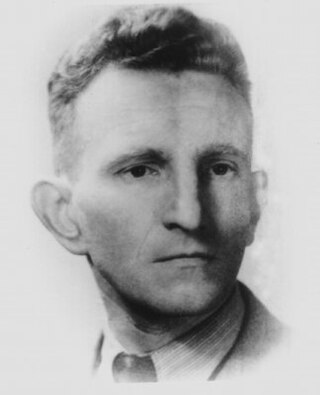
Roman-Taras Yosypovych Shukhevych was a Ukrainian nationalist and a military leader of the nationalist Ukrainian Insurgent Army (UPA), which during the Second World War fought against the Soviet Union and to a lesser extent against the Nazi Germany for Ukrainian independence. He collaborated with the Nazis from February 1941 to December 1942 as commanding officer of the Nachtigall Battalion in early 1941, and as a Hauptmann of the German Schutzmannschaft 201 auxiliary police battalion in late 1941 and 1942.

Petro Yuriiovych Mirchuk was a Ukrainian writer living in the United States and a leading member of the Organization of Ukrainian Nationalists. Mirchuk headed the OUN's propaganda apparatus in 1939. He was an activist of the Bandera faction of OUN. During World War II, he was imprisoned in Auschwitz, Mauthausen, and other concentration camps. He entered the United States as a displaced person after the war. He authored several books about the OUN and UPA, and wrote the first biography of Stefan Bandera.

The Lviv pogroms were the consecutive pogroms and massacres of Jews in June and July 1941 in the city of Lwów in German-occupied Eastern Poland/Western Ukraine. The massacres were perpetrated by Ukrainian nationalists, German death squads (Einsatzgruppen), and urban population from 30 June to 2 July, and from 25 to 29 July, during the German invasion of the Soviet Union. Thousands of Jews were killed both in the pogroms and in the Einsatzgruppen killings.
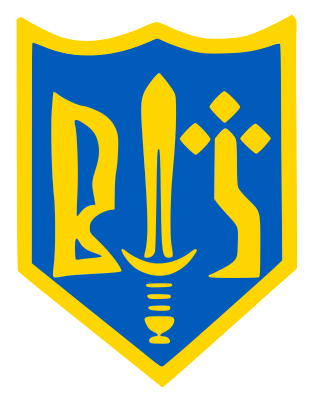
Ukrainian People's Revolutionary Army, also known as the Polissian Sich or the Ukrainian Insurgent Army, was a paramilitary formation of Ukrainian nationalists, nominally proclaimed in Olevsk region in December 1941 by Taras Bulba-Borovets, by renaming an existing military unit known from July 1941 as the UPA-Polissian Sich. It was a warlord-type military formation without a strict central command. From spring 1942 until the autumn of 1943, it acted against the German rural civil administration and warehouses, from spring 1943 it also fought against Soviet Partisans and some units against Poles; from July–August 1943, it clashed with OUN-B Bandera's UPA and UB units.
Moysey (Moses) Abramovich Fishbein was an influential Ukrainian poet and translator of Jewish origin.

The Holocaust in Ukraine was the systematic mass murder of Jews in the Reichskommissariat Ukraine, the General Government, the Crimean General Government and some areas which were located to the East of Reichskommissariat Ukraine, in the Transnistria Governorate and Bessarabia, Northern Bukovina and the Hertsa region and Carpathian Ruthenia during World War II. The listed areas are currently parts of Ukraine.
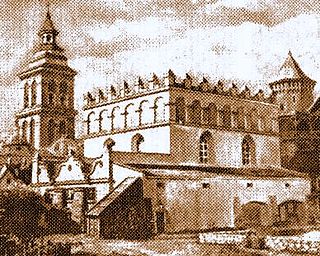
Eastern Galicia was the heartland of the medieval Kingdom of Galicia–Volhynia, currently spread over the provinces of Lviv, Ivano-Frankivsk, and Ternopil in modern western Ukraine. Along with Poles and Ukrainians, Jews were one of the three largest ethnic groups in Eastern Galicia with almost 900,000 people by 1910. From the late 18th century until the early 20th century, eastern Galicia had the largest concentration of Jews of any region in Europe.

John-Paul Himka is an American-Canadian historian and retired professor of history of the University of Alberta in Edmonton. Himka received his BA in Byzantine-Slavonic Studies and Ph.D. in History from the University of Michigan in 1971 and 1977 respectively. The title of his Ph.D. dissertation was Polish and Ukrainian Socialism: Austria, 1867–1890. As a historian Himka was a Marxist in the 1970s–80s, but became influenced by postmodernism in the 1990s. In 2012 he defined his methodology in history as "eclectic".

Volodymyr Mykhailovych Viatrovych is a Ukrainian historian, civic activist and politician.

"Glory to Ukraine!" is a Ukrainian national salute, known as a symbol of Ukrainian sovereignty and resistance to foreign aggression. It is the battle cry of the Armed Forces of Ukraine. It is often accompanied by the response "To the heroes — glory!".
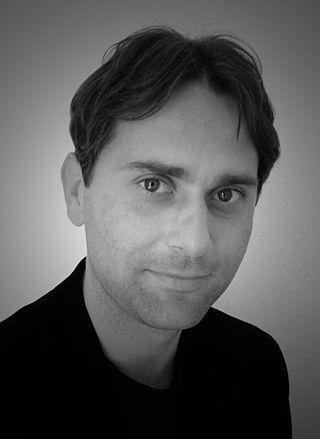
Grzegorz Rossoliński-Liebe is a German–Polish historian based in Berlin, associated with the Friedrich Meinecke Institute of the Free University of Berlin. He specializes in the history of the Holocaust and East-Central Europe, fascism, nationalism, the history of antisemitism, the history of the Soviet Union, and the politics of memory.
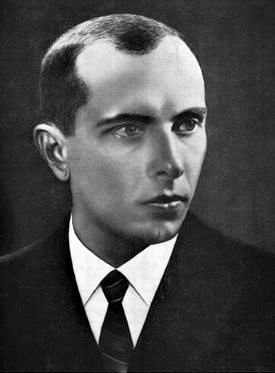
A Banderite or Banderovite is a name for the members of the OUN-B, a faction of the Organization of Ukrainian Nationalists. The term, used from late 1940 onward, derives from the name of Stepan Bandera (1909–1959), the ultranationalist leader of this faction of the OUN. Because of the brutality utilized by OUN-B members, the colloquial term Banderites quickly earned a negative connotation, particularly among Poles and Jews. By 1942, the expression was well-known and frequently used in western Ukraine to describe the Ukrainian Insurgent Army partisans, OUN-B members or any other Ukrainian perpetrators. The OUN-B had been engaged in various atrocities, including murder of civilians, most of whom were ethnic Poles, Jews, and Romani people.
Leyba-Itzko Dobrovsky or Dobrovskii was a Jewish Ukrainian soldier of the Soviet Red Army who was captured prisoner and hid his ethnic identity to survive the Holocaust.
The Battle of Lwów was a World War II battle for the control over the city of Lwów between the Red Army and the invading Wehrmacht and the Organisation of Ukrainian Nationalists.

The anti-Soviet resistance by the Ukrainian Insurgent Army was a guerrilla war waged by Ukrainian nationalist partisan formations against the Soviet Union in the western regions of the Ukrainian SSR and southwestern regions of the Byelorussian SSR, during and after World War II. With the Red Army forces successful counteroffensive against the Nazi Germany and their invasion into western Ukraine in July 1944, UPA resisted the Red Army's advancement with full-scale guerrilla war, holding up 200,000 Soviet soldiers, particularly in the countryside, and was supplying intelligence to the Nazi Sicherheitsdienst (SD) security service.
The Battle of Gurby – according to the Institute of History of the National Academy of Sciences of Ukraine, the largest battle that took place 21–25 April 1944 near the village of Gurby in the south of Zdolbuniv Raion, between the USSR NKVD troops and UPA forces. It ended with the complete victory of the Soviet troops and the breakthrough of the remnants of Ukrainian fighters from the encirclement. The number of military and civilian casualties is not precisely known.













